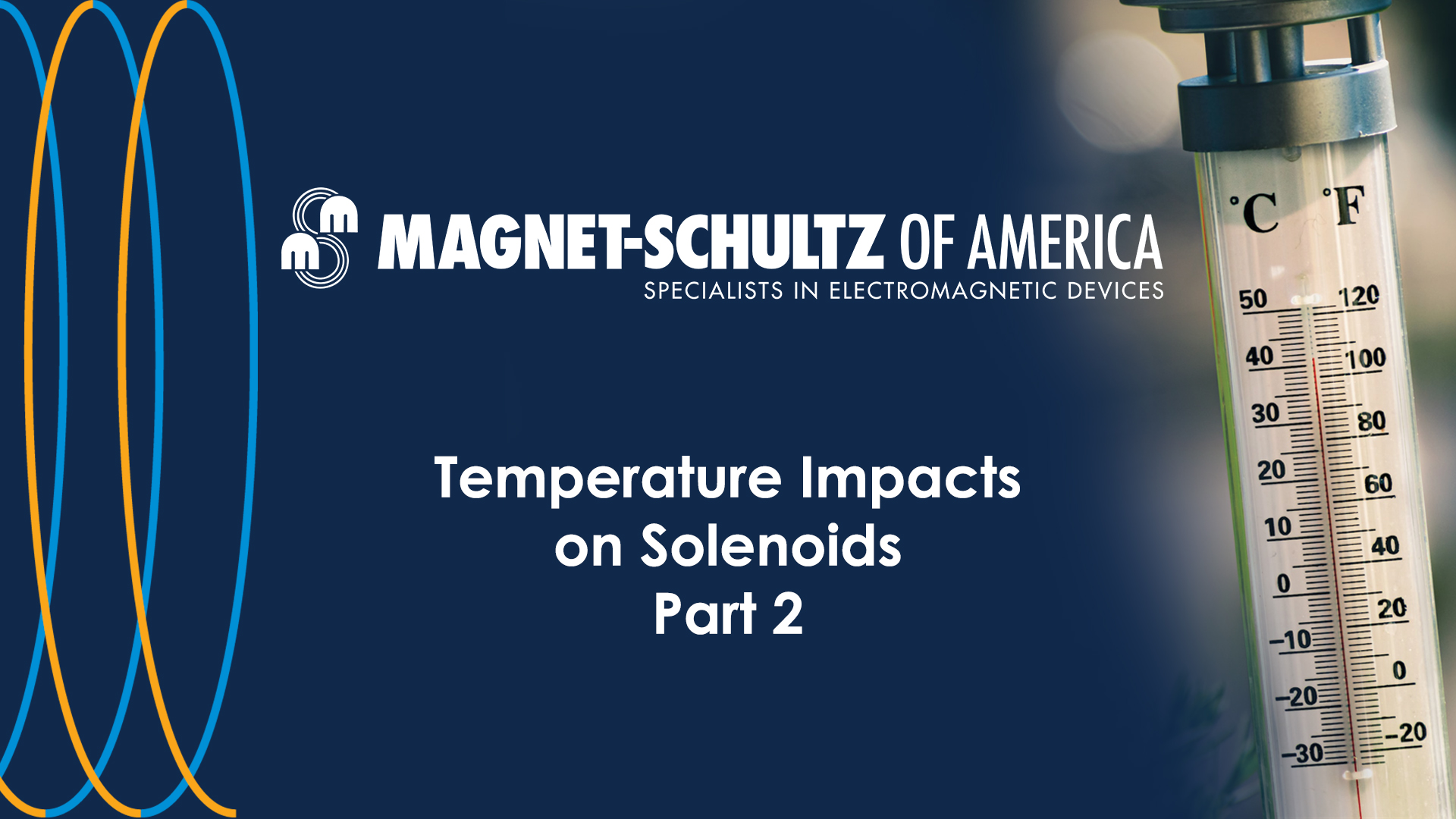Solenoids are used in a wide range of applications from locking doors to shifting the transmission on a motorcycle. Unfortunately there is no “one size fits all” approach to choosing a solenoid, or other eletro-magnetic product. However, there are several basic steps to follow when selecting the right solenoid for the application.
Some may consider a solenoid as just a linear actuator, but solenoids are capable of much more. They can push and pull, hold and block, rotate and vibrate. Within this range of capabilities, the first and most important question is, “how must the solenoid function in your application?”
Before you can begin to choose the specific solenoid you might need, you will first need to define the performance parameters/criteria which best describe your application. The best way to accomplish this is to use the following six steps as a general guideline:
1. Solenoid Size: You need to identify the available space into which the solenoid will be installed—length, width, and height. Be prepared to understand that the space you have allowed may not be sufficient to meet the subsequent criteria you define below.
2. Direction of Motion Required: Solenoids can be designed to provide a push, a pull, or a rotary movement. You need to define which action fits your application.
3. Operating Stroke (the distance the solenoid plunger/armature must travel): The amount of force a solenoid can generate decreases exponentially with the distance that the solenoid plunger (armature) must travel. The maximum distance a solenoid armature can travel depends on the size of the solenoid. Smaller/shorter solenoids provide short strokes (< .25”), and larger/longer solenoids can provide more stroke (< 2”). You need to estimate how much mechanical movement will be required to achieve the desired result in your application.
4. Actuation Force: Actuation Force is typically defined as the minimum amount of force required at the longest stroke in your application. You need to estimate how much force will be required to achieve the desired result in your application.
5. Duty Cycle: Duty Cycle is the amount of time the solenoid is energized (ON) versus the time it is de-energized (OFF). Duty Cycle is typically defined by terms such as Continuous Duty (100% ON Time), Intermittent Duty (25% ON, 75% OFF time), or Pulse Duty (< 10% ON time). The first step toward identifying the Duty Cycle your application may require would be to estimate how much time the solenoid must be energized (ON) in order to perform the required function. From a size perspective, a shorter duty cycle will enable one to achieve more pull-in force, at a longer stroke, for a given size solenoid, which may help to resolve size constraints in your application.
6. Environmental Considerations: The two Key Environmental Factors you must define are:
a. Ambient Temperature: The coil of a solenoid generates heat when power is applied. The hotter a solenoid becomes, the lower the actuation force it will be able to generate. The upper limit for the solenoid’s operating temperature is fixed by virtue of the insulation system that can be provided by the materials from which the solenoid is made. Higher ambient temperatures in a particular application will allow for less temperature rise of the coil, which will in effect, de-rate the ability of the solenoid to provide the force required. For this reason, it is necessary for you to define the ambient temperature in which the equipment you are designing will operate.
b. Humidity/Moisture/Dust: Solenoids must be specifically designed to survive in extreme environments. High Humidity/Moisture environments require that the coil be protected from moisture ingression, and the exterior of the solenoid be protected against corrosion. High dust levels require that the solenoid armature be protected against dust ingression. Unfortunately, the cost of the solenoid increases when additional environmental protection is required. For this reason, it is important that you define what level of humidity (moisture), and dust protection your application will require, so that the most cost effective solenoid design can be selected.
With the issues above addressed, you will enable the solenoid manufacturer to help you choose the right solenoid for the job.
If the level of performance needed in your application cannot be provided by a “standard” solenoid product, this information will be an excellent starting point toward designing either a customized (modified) standard solenoid, or a fully custom solenoid which will fit the unique requirements of your application.
Magnet-Schultz of America (MSA) offers Electromechanical engineering assistance in every phase of the customer’s product development cycle, doing whatever is necessary in order to help quickly bring the customer’s new products and ideas to market. To learn how MSA can provide the most effective custom solenoid solutions for your application, Contact MSA Today







Leave A Comment